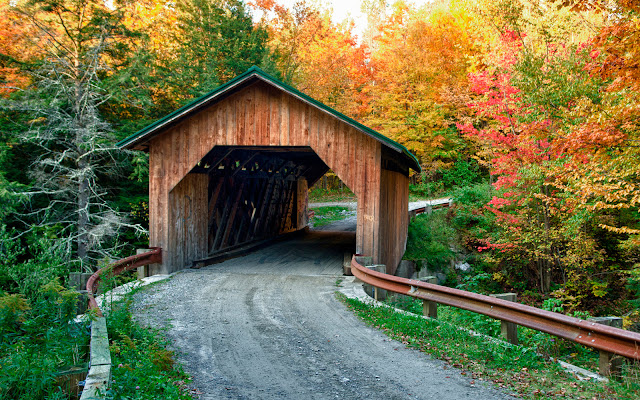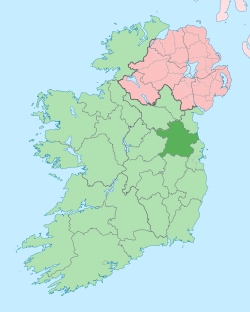Monday, September 16, 2019
John Robinson on 1850 Census of Royalton, Vermont
Who was the John Robinson on the 1850 census in Royalton, Windsor, Vermont who was listed as being 51 years old? Born in 1799? Abiathar Smith Robinson (parentless as far as I know, knew of a John Robinson living with the Tullers in Royalton in 1850, another farmer. Abiathar's wife, Julia Ann Tuller, was 15 then, and married Abiathar in Tunbridge next door to Royalton, on February 29, 1852.
A John Robinson died on the 20 May 1870 in Tunbridge, Vermont. He was born in 1803. That's close to the 1799 John Robinson.
Descendants of John Robinson
1 John Robinson b: 1803 in Tunbridge, Orange, Vermont d: May 20, 1870 in Tunbridge, Orange, Vermont
.. +Elvira Waterman b: January 1824 in Canada d: 1901 in Royalton, Windsor, Vermont m: October 13, 1844 in Tunbridge, Orange, Vermont
. 2 [1] Abiathar Smith Robinson b: December 1829 in Bennington, Bennington, VT/ Cayuga, NY/ prob. Weathersfield, Windsor, Vermont d: October 07, 1904 in Wenona, Marshall, Illinois
..... +Julia Ann Tuller b: December 18, 1834 in Royalton, Windsor, Vermont d: December 02, 1887 in Wenona, Marshall, Illinois m: February 29, 1852 in Tunbridge, Orange, Vermont by justice of the peace Alva Button
. *2nd Wife of [1] Abiathar Smith Robinson:
..... +Mary Jane Deffenbaugh Walters b: November 27, 1832 in Hocking County, Ohio d: July 05, 1918 in Streator, LaSalle, Illinois, age 85 m: 1896 in prob. Wenona, Illinois
. 2 Alvira Elvira J. Robinson b: December 05, 1837 in Bath, New Hampshire d: March 29, 1883 in Barton,Vermont
..... +Paul Cheney b: Abt. 1800 in Vermont d: August 15, 1870 in Brattleboro, Windham, Vermont m: November 30, 1853 in Tunbridge, Orange, Vermont
. 2 Lucius C.Robinson b: May 03, 1847 in Tunbridge, Orange, Vermont d: May 16, 1924 in Royalton, Windsor, Vermont
. 2 Hannah Robinson b: 1862 in prob. Tunbridge, Orange, Vermont
..... +Clarence Hayward b: 1850 in Randolph, Orange, Vermont d: April 10, 1897 in Vermont
A researcher friend from the University in New Hampshire was a Waterman. She went to all the county buildings looking for information and could not find a thing on Abiathar.
 |
| Home in Vermont |
Here's another: Descendants of John Robinson born 1801, even closer.
1 [1] John Robinson b: November 21, 1801 in Westford, Middlesex, Massachusetts d: October 12, 1868 in Rochester, Monroe, New York
.. +Unknown b: Abt. 1801 d: Abt. 1833 m: Abt. 1826
. 2 Carolyn Robinson b: 1827 in Rochester, Monroe, New York
. 2 Catherine Robinson b: 1833 in New York
*2nd Wife of [1] John Robinson:
.. +Mary Voke Tweedy b: 1818 in New York m: June 13, 1837 in Rochester, Monroe, New York
. 2 Marian Robinson b: 1847 in Rochester, Wd 3, Monroe, New York
. 2 Nelly Robinson b: 1852 in Rochester, Monroe, New York
. 2 James Robinson b: April 17, 1843 in Rochester, Monroe, New York d: 1899 in New York City, New York
..... +Emma Hulsander b: 1850 in New York
And another from Vermont:
Descendants of John Robinson
1 [1] John Robinson b: Bet. December 23, 1801 - 1802 in Calais, Washington, Vermont d: August 22, 1882 in Atherton, Boston, Massachusetts
.. +Lucy b: 1811 in Vermont
*2nd Wife of [1] John Robinson:
.. +Hannah b: 1803 in Vermont d: Aft. 1850 in Calais, Vermont m: Abt. 1823
. 2 Edwin Robinson b: 1835 in Calais, Washington, Vermont
. 2 William C. Robinson b: 1838 in Calais, Vermont
http://wvancestry.com/ReferenceMaterial/Files/The_Robinsons_and_their_Kinfolk.pdf
from Donna Robinson-
Labels: John robinson, Royalton, Tuller family, Vermont, Waterman
Sunday, September 15, 2019
Abiathar Smith Robinson and Wife Julia Ann Tuller Revealing Irish Connections
 |
| Ireland, by Lonely Planet |
1 Thomas D'Arcy b: 1507 in Dunmowe, Meath, Ireland
. +Margaret Kiltole b: 1535 in Dunmow, Meath, Ireland m: Abt. 1558 in Donmow, Meath, Ireland
.... 2 John D'Arcy b: 1554 in Dunmow, Meath, Ireland
........ +Lady Margarete Drogheda b: in Drogheda, Louth, Ireland
.......... 3 William D'Arcy b: 1580 in Dunmow, Meath, Ireland
.............. +Lady Sarah Batham b: 1589 in Louth, Ireland d: 1680 in Rotherford, Sussex, England
................ 4 Sir William O'Durgy b: 1605 in Platin Hall, County Meath, Ireland d: 1648 in Battle of Drogheda
.................... +Lady Sarah Elizsabeth Batham b: 1610 in Rotherford, Sussex, England d: 1649 in Platin Hall, County Meath, Ireland
...................... 5 William Durgy Durkee b: Bet. 1632 - 1634 in Meath County, Ireland d: January 29, 1703/04 in Ipswich, Essex County, Massachusetts Bay Colony
.......................... +Martha Cross b: March 15, 1642/43 in Ipswich, Essex County, Massachusetts Bay Colony d: January 11, 1726/27 in Windham, Windham, Connecticut Colony. m: December 20, 1664 in Ipswich, Essex County, Massachusetts.
 |
| Norman Conquest. William the Conqueror's victory at the battle of Hastings in October 1066 was followed by six years of campaigning, which irrevocably established the new king's grip on England. |
| Title | Peerage of | First | Created | Last | Extinct | Notes |
|---|---|---|---|---|---|---|
| Baron Upper Ossory | Ireland | Barnaby | 1541 | Barnaby (7th) | 1791 | Attainted 1791, died 1796. |
| Earl of Upper Ossory | Ireland | John | 1751 | John (2nd) | 1818 | Previously Baron Gowran |
| Baron Upper Ossory, of Ampthill in the County of Bedford | Great Britain | John | 1794 | John (1st) | 1818 | The 2nd Irish Earl was the first and only British Baron. |
| Baron Castletown, of Upper Ossory in the Queen's County | United Kingdom | John (Wilson) | 1869 | Bernard (2nd) | 1937 | John Wilson assumed the surname of his father, the second Earl, upon legitimation. Castletown is a village in Upperwoods, Upper Ossory. |
Labels: dna, Fitzpatrick project surname, Ireland, Norman Conquest, Normans, Ossory Fitzpatricks, Robinson, Saxons
Wednesday, September 11, 2019
Abiathar Smith Robinson's Y haplogroup of R-L21 and Kings of England's House of Stuart
My great grandfather, Abiathar Smith Robinson, was born in December 1829 in Vermont, USA, and he died in 1904 in Wenona, Marshall, Illinois.
His Y haplogroup is R-L21. The first knowledge of it was called R1b1a2a1a1b4. His line has several kings, with Scottish and Irish origins of the Stuart line of Royalty.
Kings & Queens of England or Great Britain
James I (1566-1625) => R1b-L21 (Y-DNA)
James was born in 1566, the son of Mary, Queen of Scots and Lord Darnley.
He was King of Scotland (as James VI) for 36 years before becoming King of England in 1603 — and the first in the British royal line of Stuarts.
James considered his rule to be by the “Divine Right of Kings” (under which he was considered appointed by God and not answerable to men), but all members of Parliament did not accept this belief. By governing for much of the time without Parliament — relying instead on a select group of “favourites” for advice — he diluted the legacy of strong representative government established by Elizabeth I.
James VI and I was King of Scotland as James VI from 24 July 1567 and King of England and Ireland as James I from the union of the Scottish and English crowns on 24 March 1603 until his death in 1625.
Charles I (1600-1649) => T2 (mtDNA) ; R1b-L21 (Y-DNA)
Charles I (19 November 1600 – 30 January 1649)[a] was the monarch over the three kingdoms of England, Scotland, and Ireland from 27 March 1625 until his execution.
Charles II (29 May 1630 – 6 February 1685)[c] was king of England, Scotland, and Ireland. He was king of Scotland from 1649 until his deposition in 1651, and king of England, Scotland and Ireland from the 1660 Restoration of the monarchy until his death.
*** **James II (1633-1701) => H (mtDNA) ; R1b-L21 (Y-DNA) *****
King of England, Scotland, and Ireland • married twice (1) Anne Hyde (2) Mary of Modena • born 14 October 1633 - died 16 September 1701 (aged 67) • children include: Mary II of England, Anne Queen of Great Britain, James Francis Edward Stuart "The Old Pretender", and Louisa Maria Teresa Stuart • James was deposed during the Glorious Revolution and replaced with William and Mary.
We are also related to Anne Hyde from Abiathar's wife's side of the family-Julia Ann Tuller. Anne Hyde thus became Queen.
My mother's mt haplotype was also H, but her origin was from Sweden.
The last 3 kings of England have not had a deeper test result for the public.
They are R1b, but that title is very broad. They are not from the House of Stuart.
Prince Philip, Duke of Edinburgh => H (mtDNA) ; R1b (Y-DNA)
)

Prince Philip, Duke of Edinburgh, is the husband of Queen Elizabeth II of the United Kingdom and the other Commonwealth realms. Philip was born into the Greek and Danish royal families. He was born in Greece, but his family was exiled from the country when he was an infant. After being educated in France, Germany and the United Kingdom, he joined the British Royal Navy in 1939, aged 18. From July 1939, he began corresponding with the 13-year-old Princess Elizabeth, whom he had first met in 1934. During the Second World War he served with distinction in the Mediterranean and Pacific Fleets.
Charles, Prince of Wales => R1b (Y-DNA
Charles, Prince of Wales (Charles Philip Arthur George; born 14 November 1948) is the heir apparent to the British throne as the eldest son of Queen Elizabeth II. He has been Duke of Cornwall and Duke of Rothesay since 1952, and is the oldest and longest-serving heir apparent in British history.
Prince William, Duke of Cambridge => R30b (mtDNA) ; R1b (Y-DNA)
(William Arthur Philip Louis; born 21 June 1982)
Prince William, Duke of Cambridge, KG KT PC ADC is a member of the British royal family. He is the elder son of Charles, Prince of Wales, and Diana, Princess of Wales.
Since birth, he has been second in the line of succession to the British throne.
https://wwwrobinsongenealogy.blogspot.com/2015/11/connecting-to-king-james-ii-and-his.html
https://en.wikipedia.org/wiki/Charles_I_of_England
https://en.wikipedia.org/wiki/Prince_Philip,_Duke_of_Edinburgh
https://famouskin.com/ahnentafel.php?name=7516+queen+elizabeth+ii
Labels: Anne Hyde, House of Stuart, Kings, R-L21 Y haplotype
















